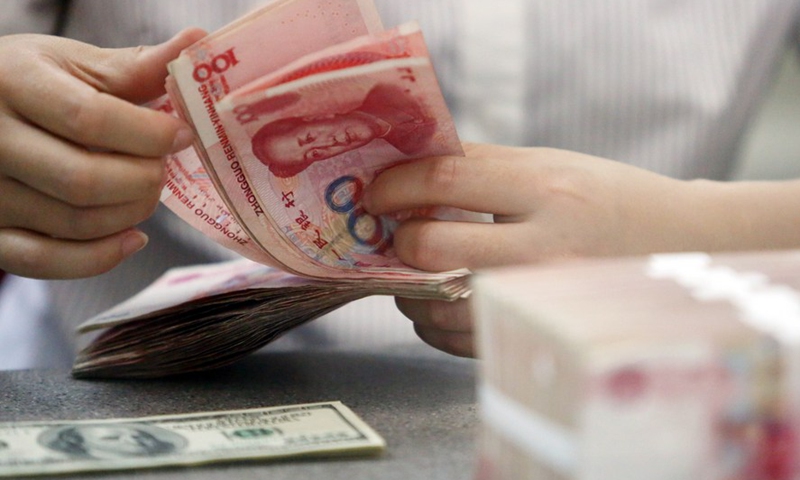
File photo shows a worker counts Chinese currency Renminbi (RMB) at a bank in Linyi, east China's Shandong Province. (Xinhua/Zhang Chunlei)
China's one-year loan prime rate (LPR), a market-based benchmark lending rate, came in at 3.45 percent on Monday, unchanged from the previous month.
The over-five-year LPR, on which many lenders base their mortgage rates, remained unchanged from the previous reading of 3.95 percent, according to the National Interbank Funding Center, affiliated to the People's Bank of China, the central bank.
The LPR is a pricing reference rate for banks and is based on rates of the central bank's open market operations, especially the medium-term lending facility rate. On March 15, the central bank left the rate for the medium-term lending facility (MLF) unchanged at 3.45 percent.
Recently, Chinese commercial banks face the pressure of rising operational costs, partly caused by the LPR cuts in the past many months in the government's bid to revive the economy, Wen Bin, chief economist from China Minsheng Bank, told the Global Times on Wednesday.
If the policy rate continues to trend on a downward trajectory in the next few months, there will be room for further LPR cuts, Wen said.
As the interest rate hike cycle is ending overseas, the pressure on the yuan's foreign exchange rates is easing accordingly, which may create more room for monetary policy maneuvering in China. Meanwhile, lack of effective demand and weak expectations domestically also require further rate cuts to boost consumer prices and dissolve risks, he said.
China has a flexible monetary policy toolbox and there is still ample policy headroom, Pan Gongsheng, governor of the People's Bank of China (PBOC), said during this year's two sessions.
At present, the average reserve requirement ratio (RRR) of China's entire banking sector averages at 7 percent and there is room for further RRR cuts, according to Pan.
China's economy continued to gain momentum, getting off to a strong start to the first two months of 2024, with industrial output, fixed-investment and retail sales all posting better-than-expected results,
official data showed on Monday.
On February 20, China's central bank lowered the five-year rate by 25 basis points to 3.95 percent, the largest one-time rate reduction in years to help rejuvenate urban housing sales.




